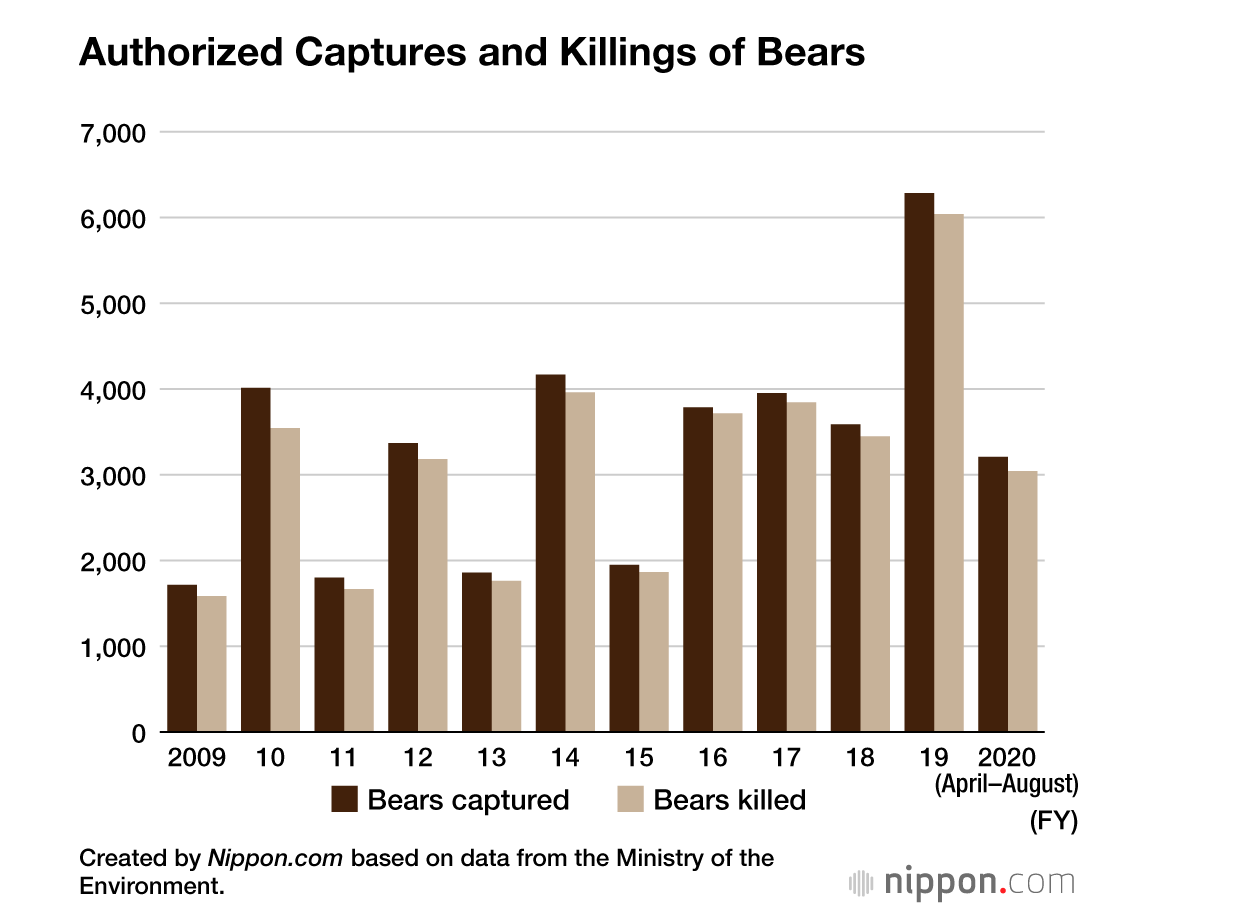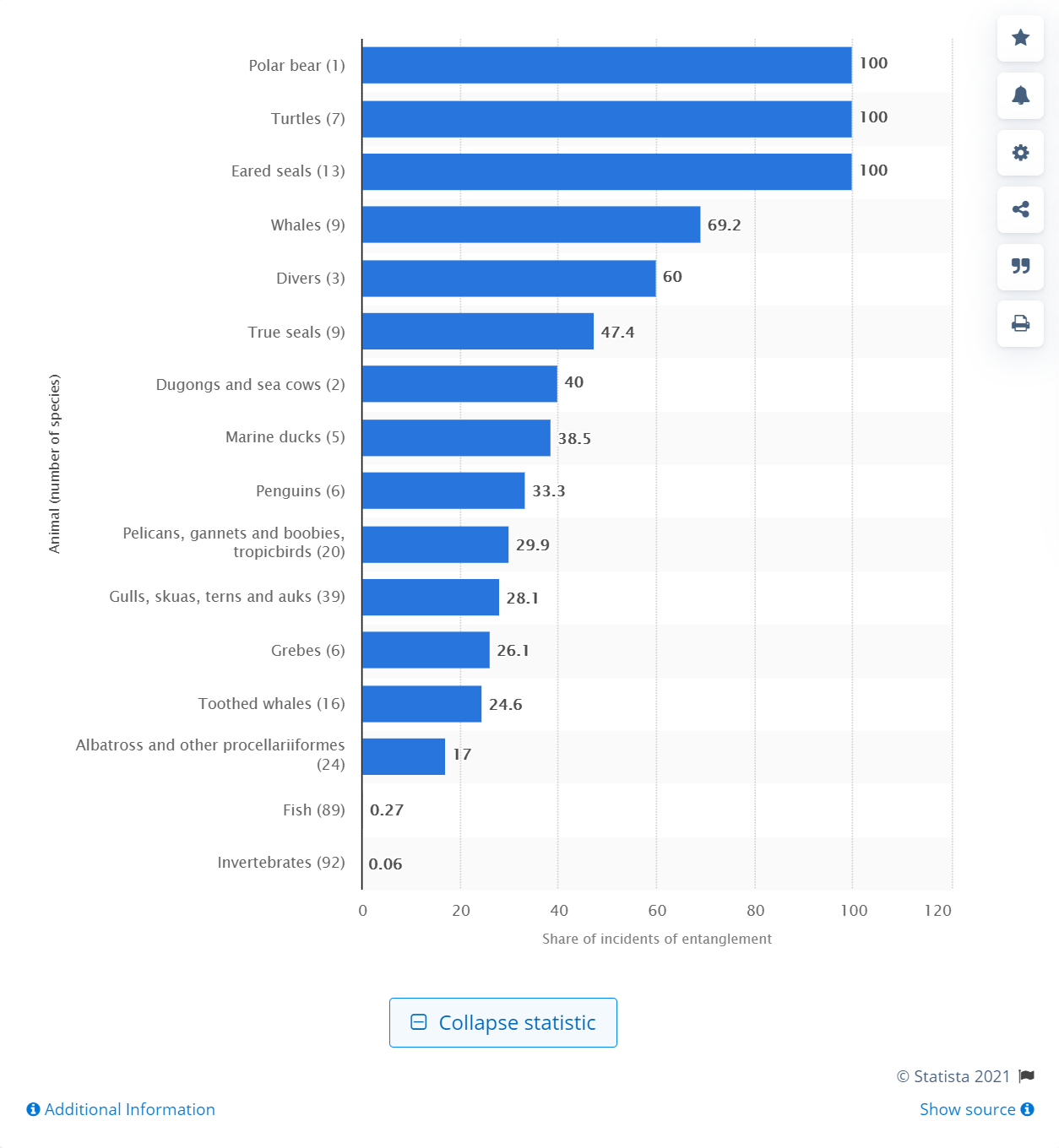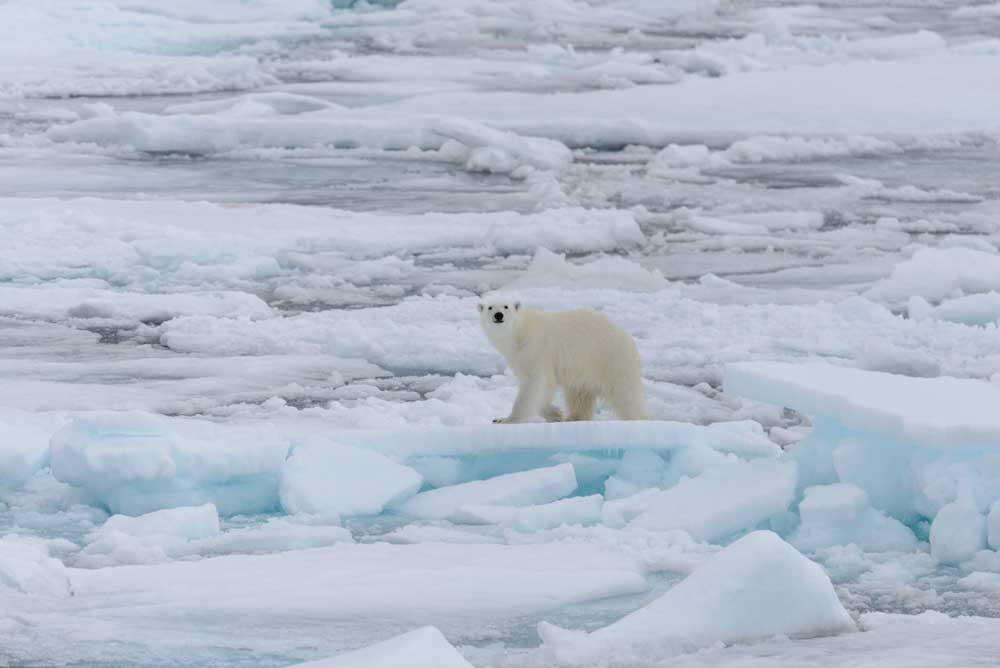There are many different types of bears in the world, and only eight types are found right now, which are the North American black bear, the brown bear, the polar bear, the Asiatic black bear, the spectacled bear, the panda bear, the sloth bear, and the sun bear.
The Ministry of the Environment Government of Japan investigated the number of bear-caused human injuries in Japan. The data shows that bear damage is on the rise almost every year (nippon.com, 2020). This data is from Japan, but bears and humans influence each other in no small way if you think about it worldwide.

Difference between the North Pole and the South Pole
At first glance, there doesn’t seem to be much of a difference between Earth’s polar regions. The biggest difference, however, is the cold. Both polar regions do not receive direct sunlight. That is why they are both cold. However, Antarctica is much colder than the Arctic. It is because the Arctic is an ocean surrounded by land, while Antarctica is a land surrounded by an ocean. The centre of the Arctic is the ocean, and Antarctica is a large continent, so even though they are similar in that they both have ice, Antarctica has a very thick ice sheet covering the continent below it. Also, there is a considerable difference in the elevation of Antarctica and the Arctic region. In addition, the North Atlantic current, a warm current that flows through the Arctic Ocean, is also a factor that contributes to the high average temperature in the Arctic. According, NASA’s Jet Propulsion Laboratory, their average temperatures in summer are 0 degrees in the North Pole and -28.2 degrees in the South Pole. In winter, it is -40 degrees in the North Pole and -60 degrees in the South Pole (Nasa.gov, 2019).
What kinds of animals are found in polar regions?
Just because the polar regions are similar, it does not mean that the same animals live there. As stated earlier, the Arctic is an ice-capped ocean, and the Antarctic is ice-topped land. Therefore, there is a difference in coldness. Furthermore, while the North Pole region is almost fully ice, the Antarctica region has plains, rivers, mountains, hills, tundra, and the taiga, the world’s largest biome. The Arctic has abundant plant life, while the 1% of Antarctica that is not covered with ice has sparse vegetation.
With those main points in mind, here are some of the different animals found in the North Pole and the South Pole.
The Arctic is home to whales, seals, walruses, polar bears, polar rabbits, polar foxes, and hawks. The Arctic Circle has a richer natural environment than the Antarctica continent does, so many animals live there. Incidentally, it is said that polar bears cannot live in Antarctica for the reason that they would have difficulty securing food. Polar bears need about 13,000 kilocalories a day to sustain their lives, and even in the Arctic, where there are far more organisms to eat than in Antarctica, some polar bears starve to death.
On the other hand, Antarctica is home to only two species of penguins: the Steller’s sea penguin and the Adélie penguin. As the continent of Antarctica has a poorer natural environment than the Arctic Circle, so it is home to only a few animals. It is said that penguins live in Antarctica instead of the Arctic not due to environmental causes but due to human causes. The Arctic has been devoid of penguins since the 1840s, when overhunting caused the extinction of all penguins living there.
The Polar Bear Crisis
There is a term called “pole shift”. It means that the poles (axis of rotation, magnetic poles, etc.) of a celestial body, like a planet, shift from its current position for some reason. Pole shifts have happened before, in fact, and there have been at least 11 in the past. Today, although there is no extreme movement, the magnetic north is moving eastward at a rate of about 64 kilometres per year due to magnetic fluctuations in the central core. Although unscientific, if a pole shift occurs, it may affect the ecology of polar bears.
It is not certain that the polar shift phenomenon will happen in the future, but there is a critical issue here. The statistic published by Statista Research Departmen indicates the proportion of species with facts of entanglement in marine litter international in 2015. (Statista, Aug 16, 2016). According to the following graph, polar bears are in a situation where they are 100% entangled in marine debris, which could harm polar bears and cause their population to decline. In addition, the number of places where polar bears live decreases every year due to global warming and the melting of ice.

Conclusion
Even if polar bears lived on the Antarctic continent, they would not secure enough food to survive because there are almost no creatures to feed on. Therefore, they can only live in the Arctic. However, polar bears are finding it more difficult to live in this world due to the garbage that people throw away and the recent abnormal weather.
Reference
・nippon.com. (2020). Bear Sightings on the Rise in Japan. [online] Available at: https://www.nippon.com/en/japan-data/h00845/.
・Nasa.gov. (2019). Which Pole Is Colder? | NASA Climate Kids. [online] Available at: https://climatekids.nasa.gov/polar-temperatures/.
・Statista. (n.d.). Species with records of marine debris entanglement worldwide 2015. [online] Available at: https://www.statista.com/statistics/596960/share-of-species-with-with-records-of-entanglement-in-marine-debris/ [Accessed 25 Sep. 2021].
